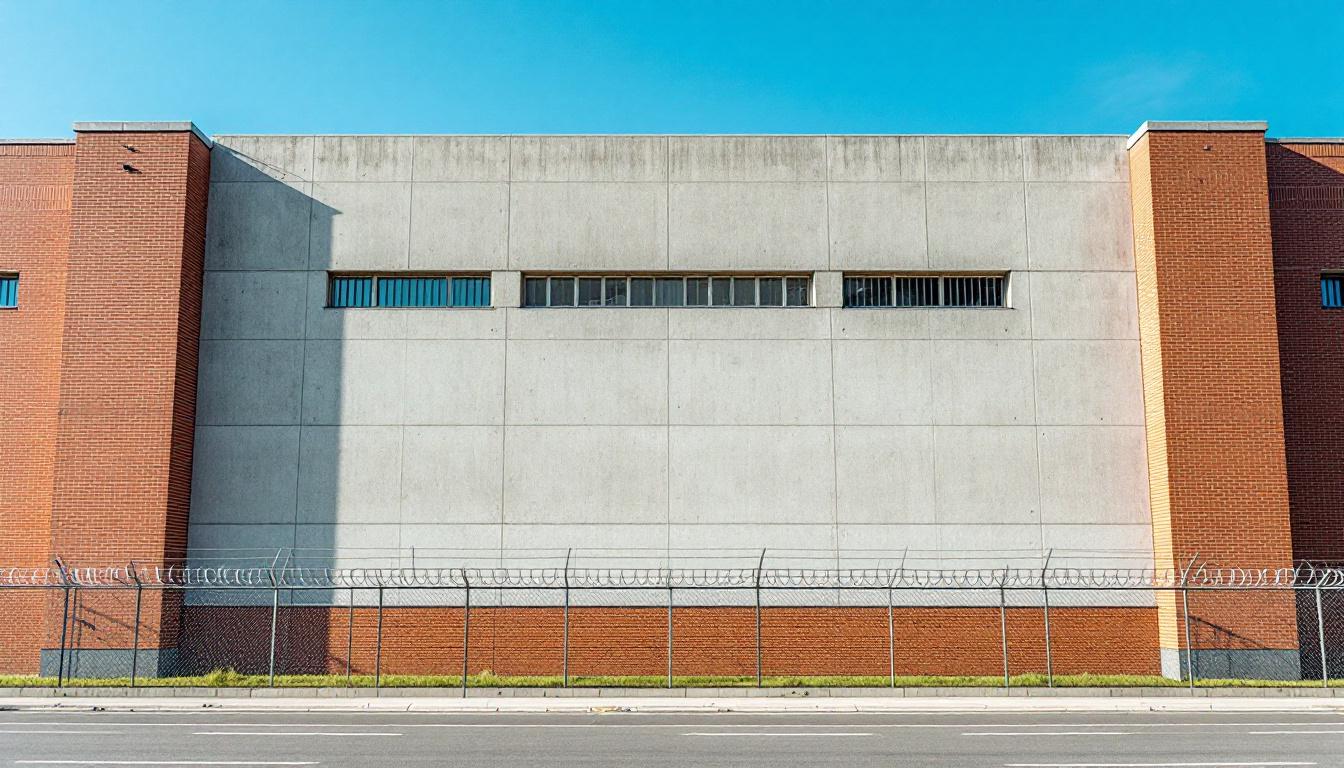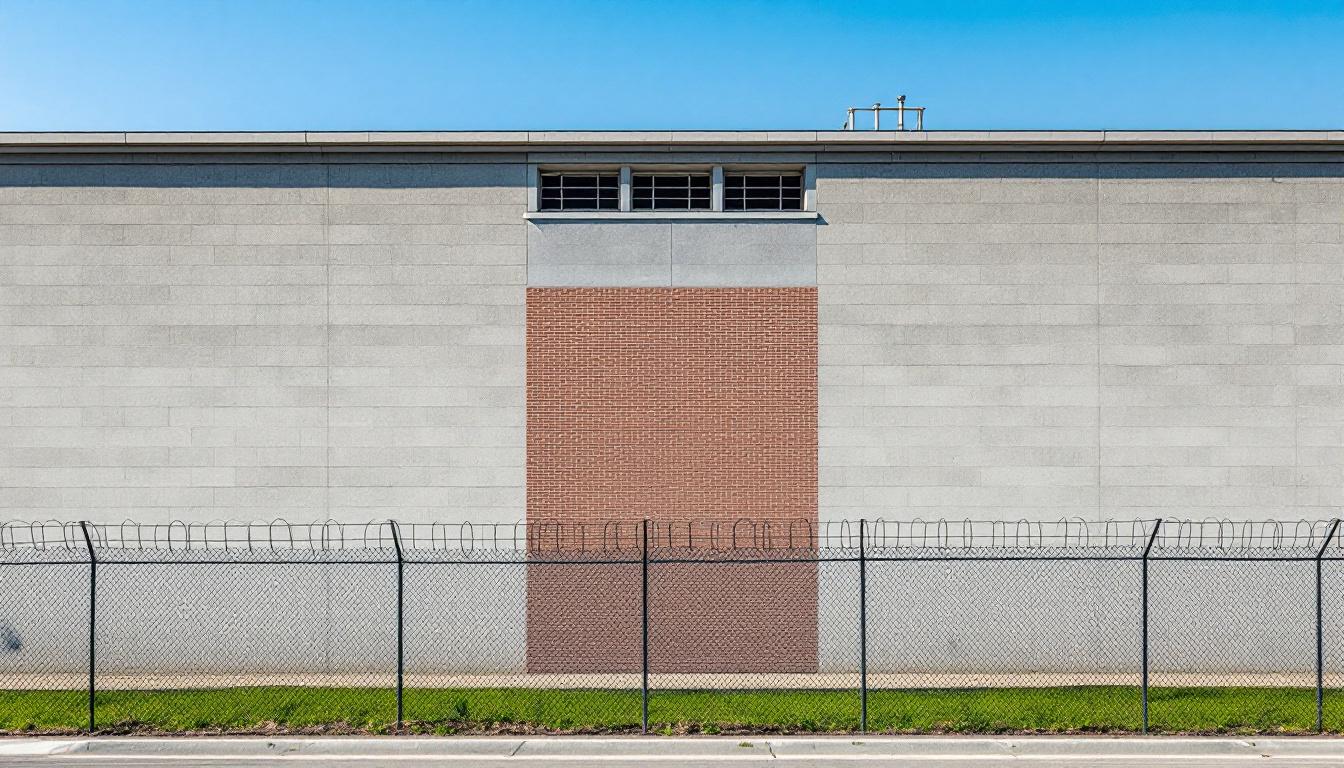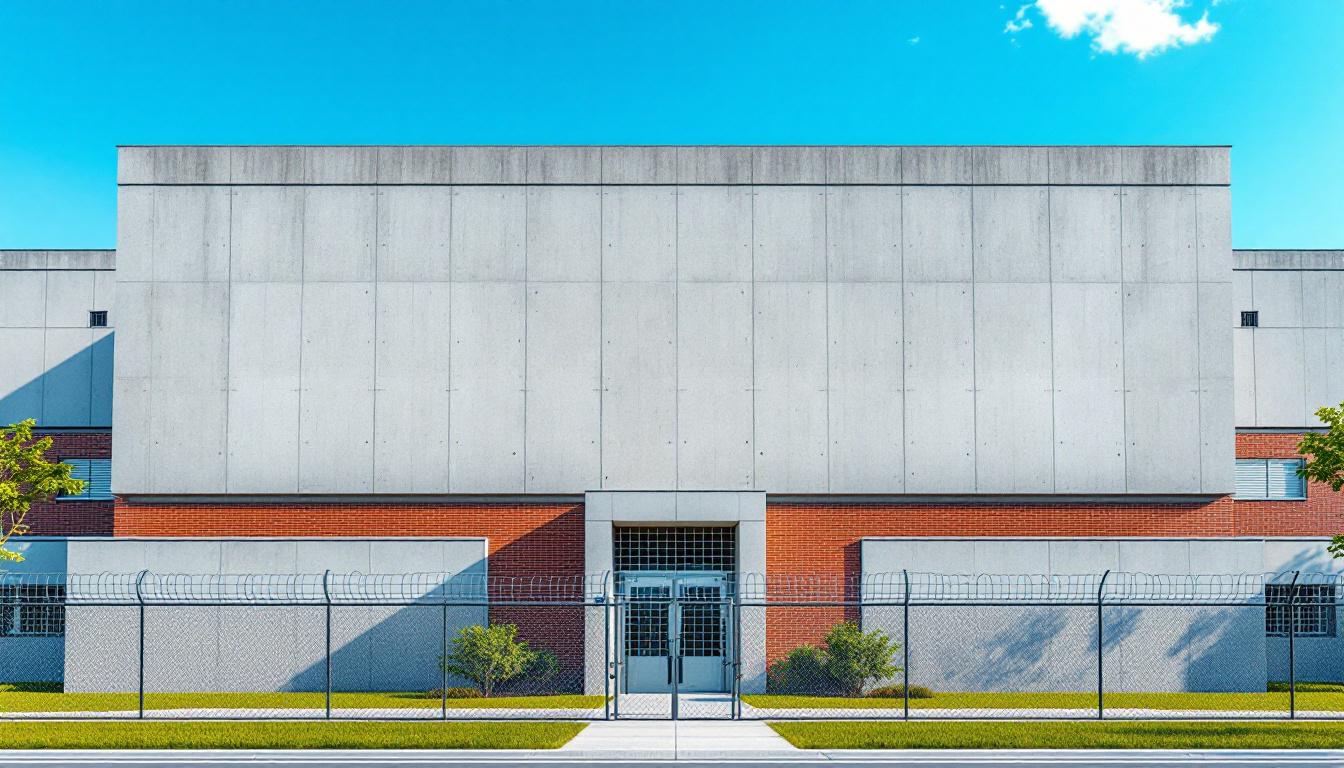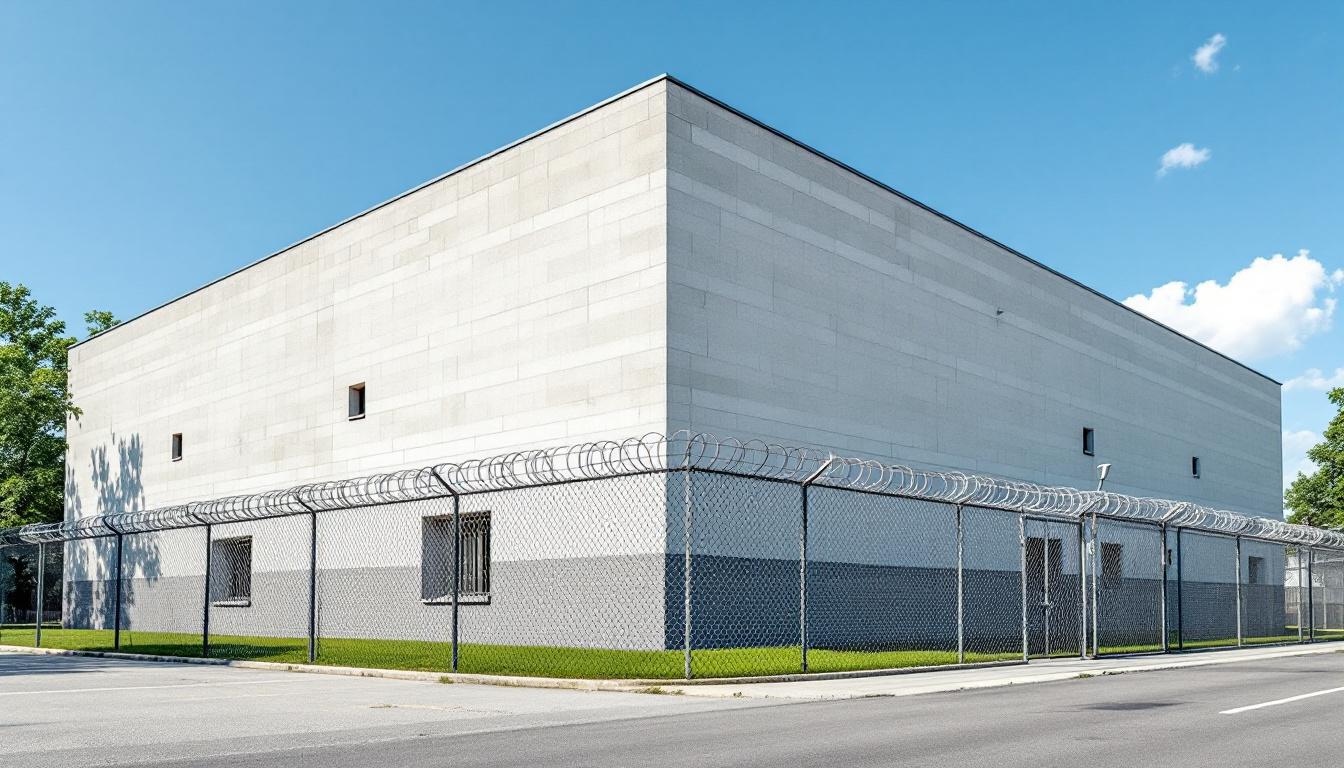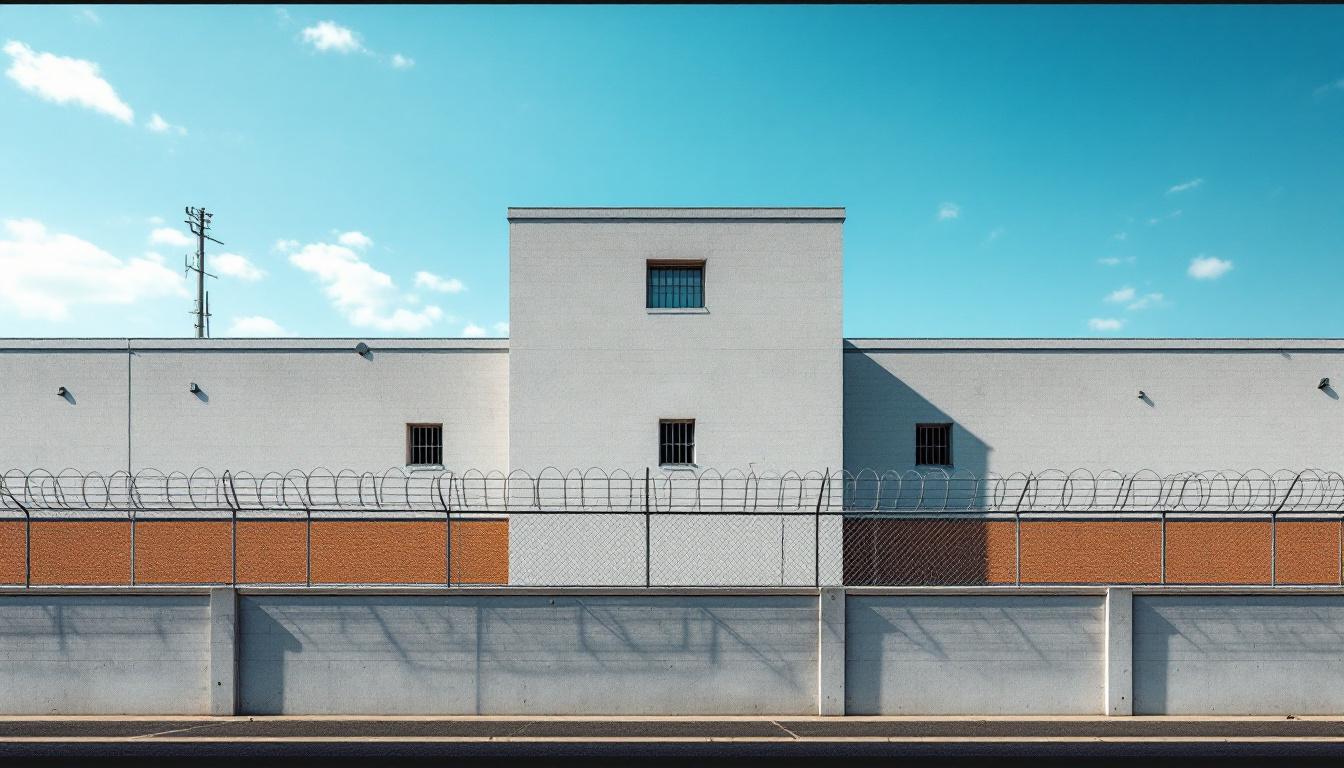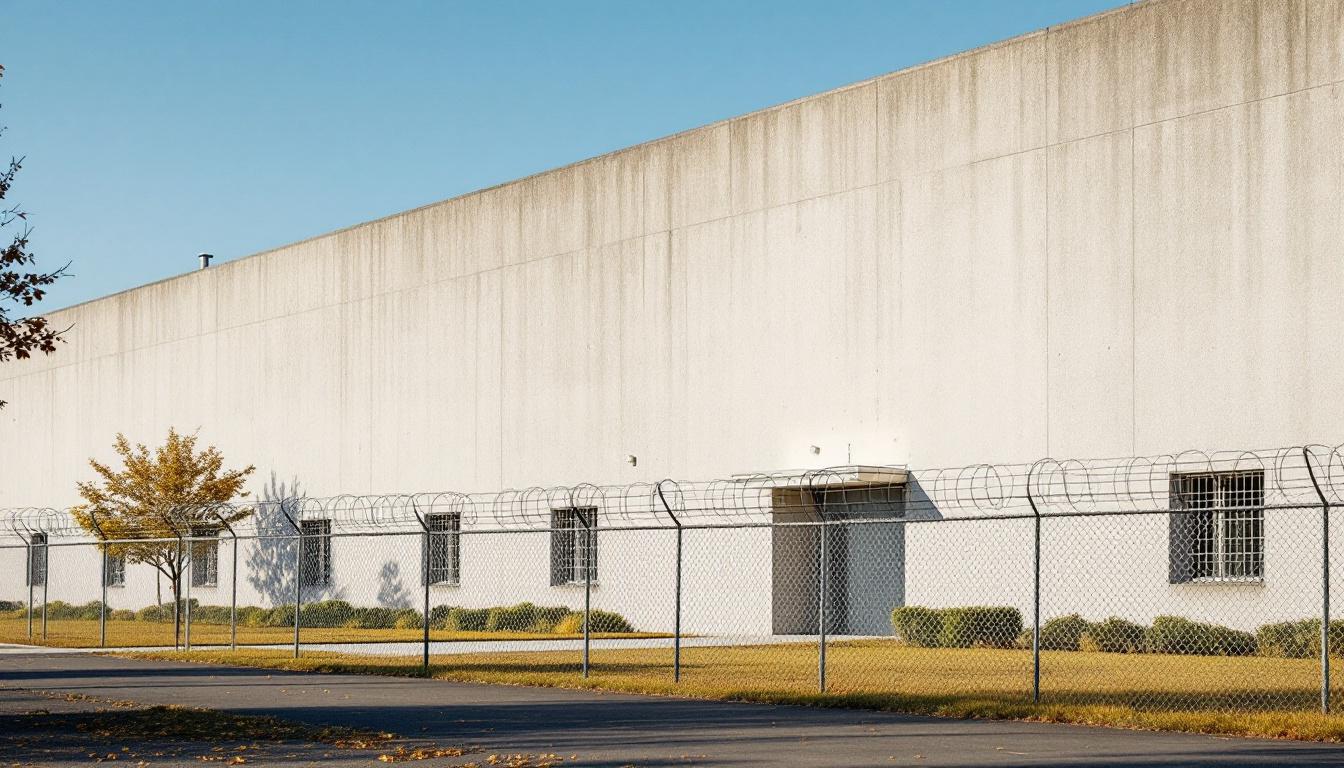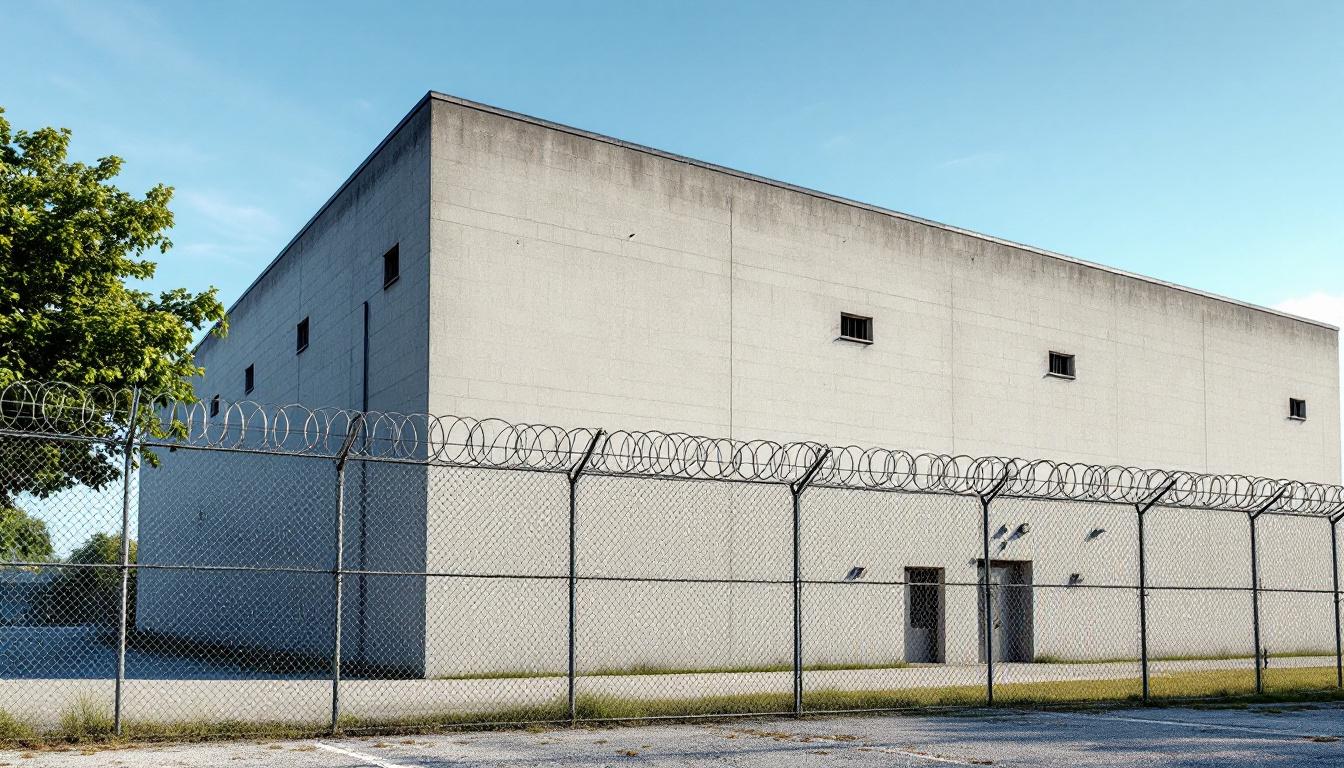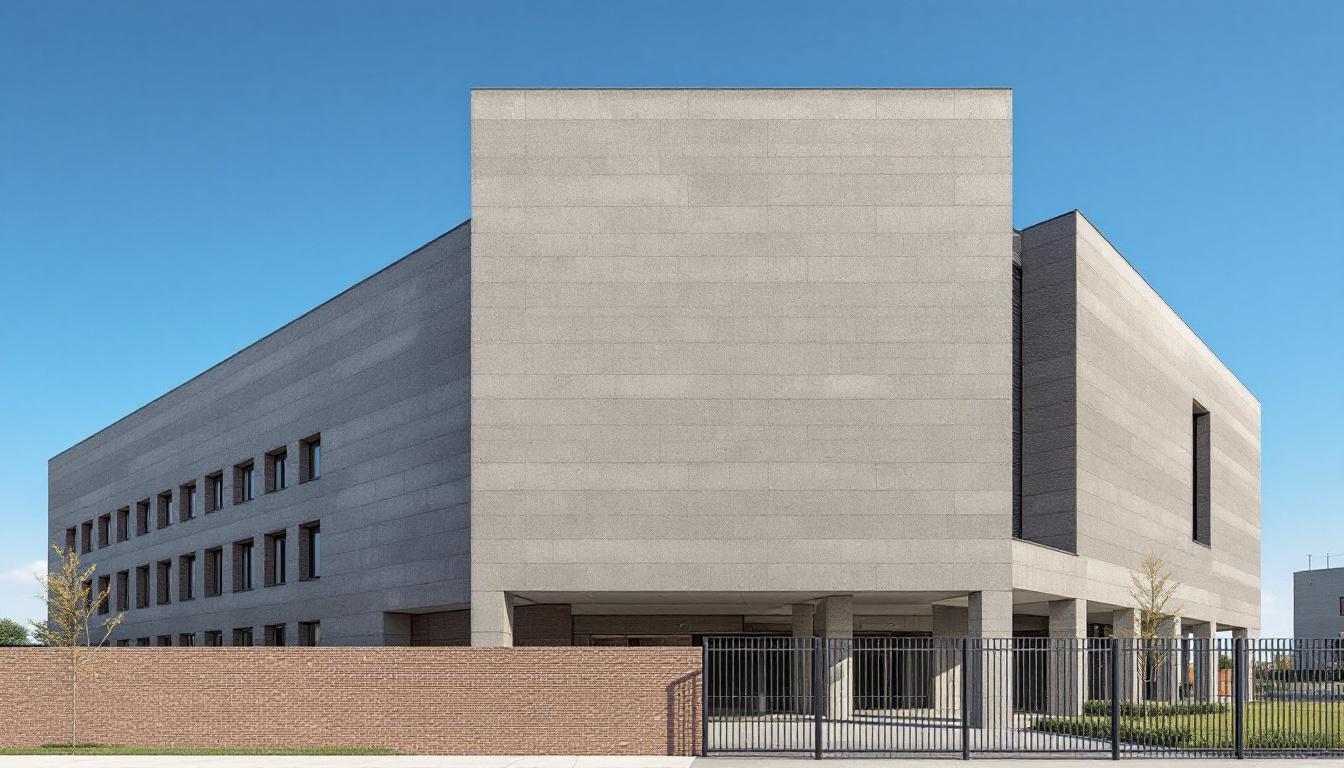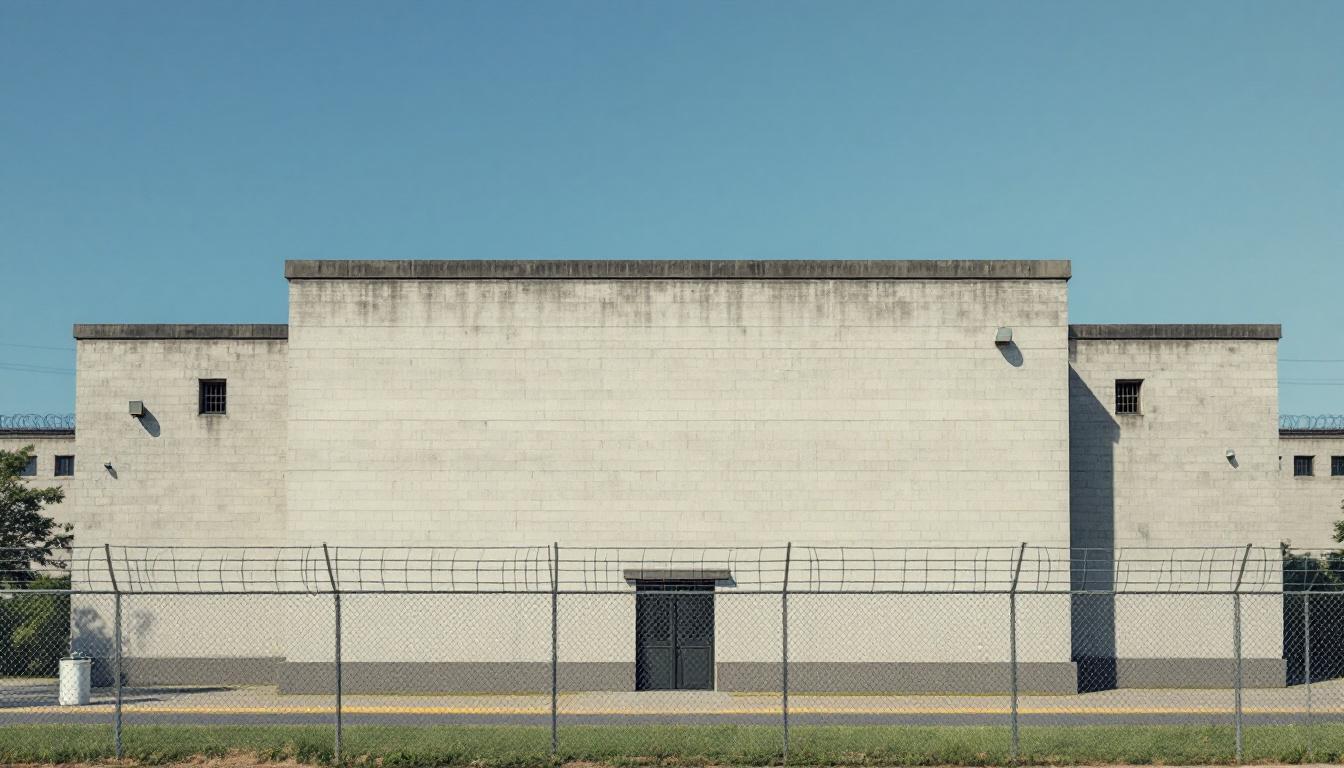
Quick Navigation
How to contact an inmate at Anchorage Correctional Complex
This comprehensive guide will walk you through how to connect with an inmate at Anchorage Correctional Complex. Follow the steps below to find an inmate and send letters and photos:
- Search for the inmate using our search tool below
- Create your account or log in to Penmate
- Write your message (up to 6,000 characters)
- Send instantly - inmates receive printed copies daily
Find an Inmate
Search for an inmate to start communicating today
Tip: You can search by first name, last name, or inmate ID number
To contact a person at Anchorage Correctional Complex start by searching for the person on the official facility website. Perform a search by following these steps:
- Step 1: Enter their first name and last name into the search form and click "Search"
- Step 2: Locate their inmate record
- Step 3: Write down their Inmate ID and any housing information provided
Important! Be sure to enter the person's full name. Nicknames should not be used.
How to Send Messages to Inmates

You can use your phone or computer to send emails, letters, and photos to an inmate. Messages are sent electronically to inmate tablets or kiosks at the facility. If you would like to send a message, start by searching for an inmate at Anchorage Correctional Complex.
Sending Photos and Postcards

A great way to send love and support to a loved one at Anchorage Correctional Complex is to send photos and postcards. It only takes a few minutes to send photos from your phone and it makes a huge difference. You can also mail postcards with words of support and inspiration, or design your own postcard for special moments like birthdays and holidays.
Important! Be sure not to send any explicit photos or they may not be approved by the facility. You can also use a photo printing app like Penmate to make sure your photos are printed at the correct size (4x6 or 3x5) and are mailed according to the rules and regulations of Anchorage Correctional Complex.
Frequently asked questions about Anchorage Correctional Complex
-
How long does it take to deliver a message?
If you're sending an email message your letter is usually delivered within 24-48 hours. For messages sent via mail you should expect delivery within 3-7 days. All messages will need be approved by Anchorage Correctional Complex.
-
How much does it cost to send a message to Anchorage Correctional Complex?
You can send a message free using your phone or mail a message via USPS for the price of a $0.60 stamp and envelope. You can also purchase credits or e-stamps from services starting at $1.99.
-
What services can I use to contact an inmate at Anchorage Correctional Complex?
Penmate
You can use Penmate to send letters and photos to an inmate from your phone. It's an easy way to stay in touch during your loved one's incarceration. Use the inmate locator to find an inmate's location and contact information, then you can send messages within a few minutes.
Securus messaging
Securus may be another option for communicating with an inmate at Anchorage Correctional Complex. You can create a friends and family account and purchase credits to send messages. All messages will be reviewed and must be approved by the facility.
JPay
Some county jails and state prisons may support sending messages with JPay. You must register an account with the system, find your loved one, and purchase stamps to send messages. For some locations you can also attach photos.
Smart Jail Mail
You may also check if Smart Jail Mail is available at Anchorage Correctional Complex. Smart Jail Mail is operated by Smart Communications and has contracted with some state and county jails. After purchasing credits, your messages and photos are sent to the facility, printed out, and then handed out to your loved one.
-
What is the mailing address of Anchorage Correctional Complex?
Mailing address:
Anchorage Correctional Complex
1400 E 4th Ave
Anchorage, AK 99501
Phone: (907) 269-4100Business hours:
- Monday: 9:00 AM – 5:00 PM
- Tuesday: Closed
- Wednesday: 9:00 AM – 5:00 PM
- Thursday: 9:00 AM – 5:00 PM
- Friday: 9:00 AM – 5:00 PM
- Saturday: 9:00 AM – 5:00 PM
- Sunday: 9:00 AM – 5:00 PM
-
What are the visiting hours at Anchorage Correctional Complex?
Visiting hours at Anchorage Correctional Complex vary by housing unit and security level. Generally, visits are scheduled on weekends and holidays, with some facilities offering weekday visits. Contact the facility directly at (907) 269-4100 or check their website for the current visiting schedule. Visits typically last 30-60 minutes and must be scheduled in advance.
-
What items are prohibited when sending mail to Anchorage Correctional Complex?
Prohibited items typically include: cash, personal checks, stamps, stickers, glitter, glue, tape, staples, paperclips, polaroid photos, musical or blank greeting cards, hardcover books, magazines with staples, and any items containing metal or electronics. Only send letters on plain white paper with blue or black ink. Photos must be printed on regular photo paper (no Polaroids). Always check with Anchorage Correctional Complex for their specific mail policies.
-
How do I send money to an inmate at Anchorage Correctional Complex?
You can send money to an inmate at Anchorage Correctional Complex through several methods: 1) Online using JPay, Access Corrections, or the facility's approved vendor, 2) Money orders mailed directly to the facility with the inmate's name and ID number, 3) Kiosks located in the facility lobby, or 4) Over the phone using a credit or debit card. Fees vary by method, typically ranging from $2.95 to $11.95 per transaction.
-
Can I schedule a video visit with an inmate at Anchorage Correctional Complex?
Many facilities now offer video visitation as an alternative to in-person visits. At Anchorage Correctional Complex, video visits may be available through services like Penmate, Securus Video Connect, GTL, or ICSolutions. Video visits typically cost $10-20 for 20-30 minutes and must be scheduled in advance. You'll need a computer or smartphone with a camera and reliable internet connection. Contact the facility for their specific video visitation policies and approved vendors.
-
What identification do I need to visit an inmate at Anchorage Correctional Complex?
All visitors must present valid government-issued photo identification such as a driver's license, state ID, passport, or military ID. Minors must be accompanied by a parent or legal guardian who can provide the minor's birth certificate. Some facilities require visitors to be on the inmate's approved visitation list, which may require a background check. Contact Anchorage Correctional Complex for specific ID requirements and visitor approval procedures.
-
How can I find out an inmate's release date?
To find an inmate's release date at Anchorage Correctional Complex, you can: 1) Use the online inmate search tool if available, 2) Call the facility's records department, 3) Contact the inmate's case manager or counselor, or 4) Have the inmate provide this information during a call or visit. For privacy reasons, some facilities only release this information to immediate family members.
Facility Overview
Contact Information
Anchorage Correctional Complex1400 E 4th Ave
Anchorage, AK 99501
Phone: (907) 269-4100
Official Website

About Anchorage Correctional Complex
Comprehensive rehabilitation services and educational programming form the foundation of operations at Anchorage Correctional Complex, AK, where individuals typically have access to vocational training, substance abuse counseling, and mental health support designed to address the diverse needs of Alaska’s incarcerated population. This AK correctional facility generally emphasizes skill development and personal growth opportunities that may include literacy programs, job readiness training, and therapeutic interventions aimed at reducing recidivism and supporting successful community reintegration.
Located in Alaska’s largest city, the correctional facility operates within the state’s broader commitment to evidence-based practices and public safety initiatives. The complex typically serves individuals from across the region, often providing specialized services that align with Alaska’s comprehensive geographic and cultural considerations. Programs may focus on addressing the particular challenges faced by residents returning to communities throughout the state, including remote areas where resources and support systems can be limited.
Through its integration with state correctional goals, Anchorage Correctional Complex generally maintains an operational philosophy centered on accountability, rehabilitation, and community protection. The facility’s approach to individuals services often emphasizes preparing residents for successful transitions back into society while maintaining security standards appropriate for its correctional designation. Staff typically work to create an environment where personal responsibility and positive behavioral changes are encouraged through structured programming and individualized case management.
Programs & Services
Multiple pathways for personal development and skill-building create a foundation for positive change at Anchorage Correctional Complex. The facility typically recognizes that meaningful transformation requires addressing various aspects of an individual’s life through comprehensive programming. This approach often includes educational advancement, practical skill development, and therapeutic support services designed to prepare individuals for successful community reintegration.
Educational and vocational opportunities form the cornerstone of personal development programming. High school diploma programs may offer individuals the chance to complete their secondary education through structured coursework and academic support. Moreover, vocational training opportunities often provide hands-on experience in practical skills that can translate directly to employment prospects upon release. These educational pathways typically emphasize both academic achievement and workforce readiness.
Therapeutic and support services address the underlying factors that may contribute to criminal behavior while building essential life skills. Substance abuse treatment programs often provide individuals with tools and strategies for maintaining sobriety and making healthier choices. Additionally, support services may include parenting classes that help individuals strengthen family relationships, reentry programs that facilitate community transition planning, and community resource connections that link participants with ongoing support networks. Practical services such as laundry facilities typically ensure individuals can maintain personal hygiene and dignity throughout their incarceration.
Daily Life & Visitation
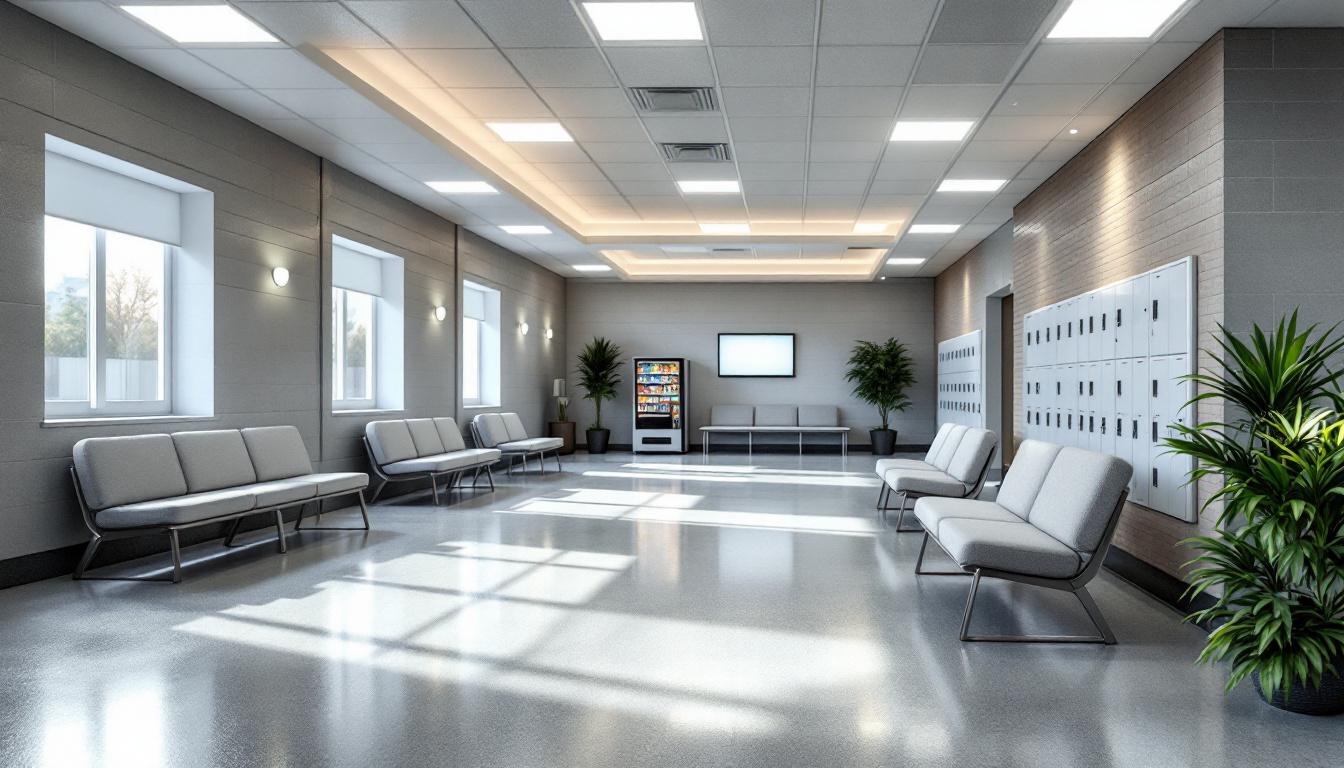
The sound of count time now punctuates each day for individuals housed at Anchorage Correctional Complex, establishing a rhythm that structures their daily existence. Residents typically wake early for breakfast service, followed by work assignments or programming activities that occupy much of their morning and afternoon hours. Regularly scheduled counts occur throughout the day, requiring individuals to be present and accounted for in their designated areas. Meal times generally provide structured breaks in the routine, with individuals moving to dining areas for breakfast, lunch, and dinner service.
Living accommodations at the facility typically consist of shared housing units where individuals may be assigned roommates based on classification levels and security considerations. Moreover, personal property allowances generally include basic necessities and approved items that can be purchased through the commissary system. Whereas some areas offer more privacy, others operate with dormitory-style arrangements that require individuals to adapt to communal living situations. Housing assignments often depend on factors such as behavior, program participation, and length of stay.
Programming schedules offer structure through educational classes, vocational training, and substance abuse treatment options that individuals may participate in during designated hours. Recreation opportunities typically include access to exercise areas, television viewing, and library services when available. Family connections remain important through visitation programs that generally allow approved visitors during specific timeframes, while telephone access and written correspondence provide additional communication options. Work assignments within the facility often include kitchen duties, maintenance tasks, and other institutional jobs that help individuals maintain daily structure while contributing to facility operations.
Ready to Connect?
Start communicating with your loved one today
Search for an Inmate
